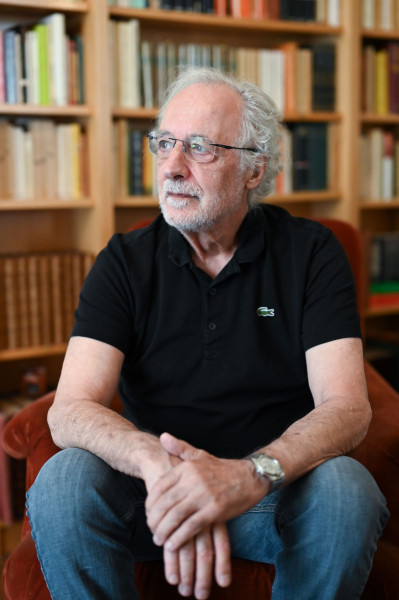Ohio State’s Agostini wins Nobel Prize in Physics
Emeritus professor one of 3 who were awarded this year

|
Jeff Grabmeier Ohio State News |
Pierre Agostini, professor emeritus of physics at The Ohio State University, has been awarded the 2023 Nobel Prize in Physics with two of his colleagues.
The Royal Swedish Academy of Sciences recognized the scholars “for experimental methods that generate attosecond pulses of light for the study of electron dynamics in matter.”
The Nobel Prize committee said Agostini and his fellow winners “have given humanity new tools for exploring the world of electrons inside atoms and molecules …(and) have demonstrated a way to create extremely short pulses of light that can be used to measure the rapid processes in which electrons move or change energy.”
Agostini shares the award with Ferenc Krausz from the Max Planck Institute of Quantum Optics and Anne L’Huillier from Lund University in Sweden. L’Huillier is a former student of Agostini’s.
“The Nobel Prize is the pinnacle of scientific achievement,” said Peter Mohler, acting president and executive vice president for research, innovation and knowledge at Ohio State. “All of us at Ohio State celebrate this recognition of Pierre’s lifetime of research and scholarship.”
 Agostini said he never would have dreamed that his work would someday be recognized with a Nobel Prize.
Agostini said he never would have dreamed that his work would someday be recognized with a Nobel Prize.
“It is really fantastic when I think about it, that (the research) went this far,” he said.
“I’ve had (messages) from a number of people and colleagues that were working on the same experiments back at that time. And, you know, I am really indebted towards them.”
At Ohio State, Agostini works with Louis DiMauro, professor of physics, in the Agostini-DiMauro Ultra-fast Atomic Physics Research Group.
DiMauro said that Agostini’s work allowed scientists to capture the movement of electrons – which can move at the astonishing rate of 43 miles per second. Agostini and the other laureates created techniques to capture electrons using pulses of light that last just an attosecond – one quintillionth of a second.
He compared the advance to what Eadweard Muybridge did when, working at a racetrack in California, he developed a camera that could freeze the motion of a horse galloping.
“Playing back these photos in a sequence produced one of the first movies. The attosecond leap in time made by Professor Agostini was a quadrillion times shorter than the Muybridge camera shutter,” DiMauro said.
This is significant because electrons are the “glue of matter,” he said.
“Now, since you can clock them, you can also intervene and alter their outcome – for example, engineer new devices that can optimize the speed of electronic operations.”
DiMauro said despite his great accomplishments, Agostini is a humble man who likes to put the spotlight on others.
“He is a very kind, humble, generous person, and a real scholar.”
When he is at Ohio State, students love working with Agostini and considers him an “alternate adviser.”
“He loves talking to students and they really liked the fact that he challenges them because he does it in a way that’s not intimidating,” DiMauro said.
Michael Poirier, professor and chair of physics at Ohio State, also praised the work of Agostini.
“He is a great scholar. This is clearly about Pierre, but it also shows the great work in ultra-fast physics here at Ohio State,” Poirier said.
“It is an indicator that we are one of the leading institutions in the world in this area.”
Agostini said he is grateful to Ohio State for giving him an opportunity to work in 2005 after he retired from French institutions.
“I’m very happy for Ohio State. First of all, Ohio State is the place that gave me a place to work … after retirement. And I'm very grateful to Ohio State, and I hope they will get some benefit from this Nobel Prize.”


